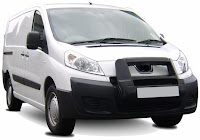Frequency of contacts for AIS 2+ -injuries, lower extremities (front-topedestrian impacts, only passenger cars, all impact speeds)
In both, the GIDAS- and IHRA-data, about 75% of the bumper contacts are related to the lower leg injuries. Knee injuries account for 5-13%.
GIDAS (German In-Depth Accident Study) is the largest accident study in Germany.The data collected in the GIDAS project is very extensive, and serves as a basis of knowledge for different groups of interest. Due to well defined sampling plan, also representativity compared to the federal statistic is guaranteed.
IHRA (The International Harmonized Research) do Activities on Intelligent Transport Systems (ITS) was established to coordinate, collaborate and exchange information on research aimed at optimizing the safety performance of ITS.
A realistic overall potential of a test procedure relating to the front end of passenger cars, the portion of impacts with passenger cars (75%) and the full frontal car impacts (54%) should only be considered. These shares, taken from the GIDAS-data are presented above.
Volvo S60 Pedestrian Dectection
Mercedes-Benz - Pedestrain protection
System function
The overall system functionality when impacting a pedestrian will be as follow:
1/ Sensor detection of a pedestrian (not part of this project).
2/ The bonnets hinges are released.
3/ The airbag starts to inflate and lifting the bonnet approx. 100mm in the rear edge
4/ The airbag is positioned over the windscreen and A-pillars
5/ The airbag have full performance up to 300ms. Target HIC<650.
Packaging/Installation
When introduce a new system in an existing vehicle packaging is often a problem. In this case the airbag module is packaged in centre Y0 area, see picture below. Critical packaging issues are specific wipers, brake booster and brake fluid reservoir and the battery. Important for the functionality of the protection system is also the position of the airbag module relative the bonnet. The bonnet must overlap airbag module to be able to lift the bonnet and to support the bonnet in a lifted position. Further on the airbag attachments to BiW should withstand a force of approx 8-10 kN.
Packaging example of a pedestrian airbag module
Vehicle requirements
On a system level the important parameters to control are:
1.Wrap Around Distance (WAD)
- Coverage area of the airbag. The airbag must protect the area where a pedestrian can impact the vehicle up to WAD 2100mm
2.Timings
- Head Impact Time (HIT) of the pedestrian need to be higher than Total Response Time (TRT) of the active protection system.
- HIT start when the pedestrian leg impact the bumper and stop when the head impact the vehicle. Typical head impact times can be seen in picture below for different pedestrian size and impact velocities. These times differ due to car geometry and need to be defined per vehicle.
- TRT consist of sensing time (not part of this study), activation of actuators and position/inflation of actuators/airbag
Example of different head impact times from first contact between pedestrian and vehicle.
3.Stand up time
- The airbag need to be in position up to 300 ms to manage different pedestrian sizes, vehicle speed and vehicle geometries.
4.Head form testing
- Testing is performed according to Euro-NCAP test procedure. Target for the project has been HIC< 650.
Airbag module and bag folding pattern
The airbag unit, consist of a gas generator (1) which inflates the airbag (2), an airbag container (3), a module cover (4) and a deflector (5) which secure the gas flow from the gas generator. The airbag cover is design to open up when the gas generator is activated.To secure a bonnet lifting and the final position of the airbag a specific patented folding pattern has been developed.
Airbag module mounted in test vehicle
Bonnet hinge prototype
Experimental test result
Physical test results using the EuroNCAP test method, with adult head impacts.
Tests have been done both on the rear bonnet end as well as on the actual airbag.
The actual test performance and test location in shown in picture below
Physical test result
Head impact test at airbag
Reduced collision speed by using a brake-assistant
Investment into research for advanced systems, aimed at accident avoidance rather than injury reduction is the most promising strategy to reduce traffic casualties for pedestrians and occupants.Given the actual and rapid development of advanced sensor technologies, this is a realistic objective in the near future.Possible new active systems in vehicles which have additional potential to reduce pedestrian accidents in the future include:
- Brake-Assistant
- Anti-Lock Brakes Systems (Enhanced)
- Headlamp Lighting Systems (swivelling headlamps or bend-lighting)
- Radar Sensors (24 GHz-technology)
- Increasing Visibility
- Intelligent Mirror Systems
- Wheel & Tire Systems
- By-Wire Systems
- Yaw Control Systems
























